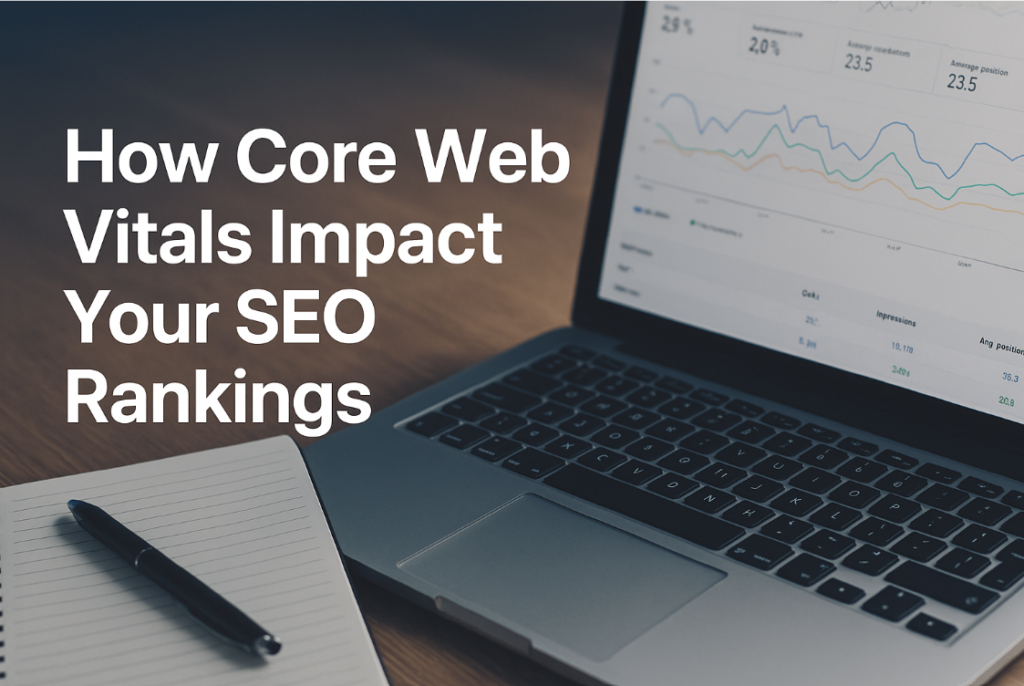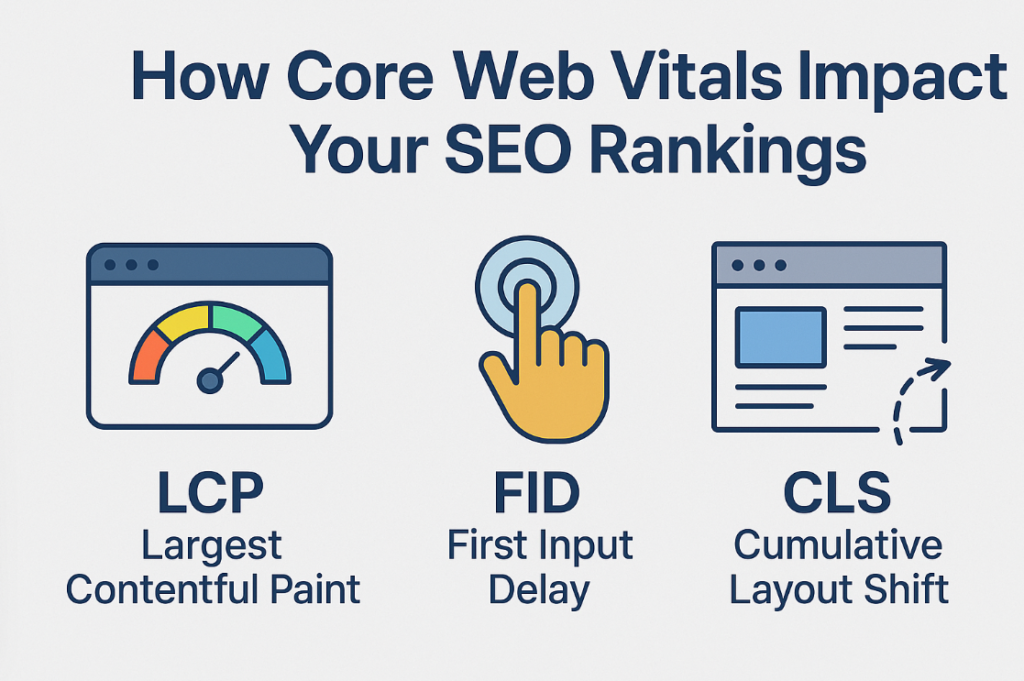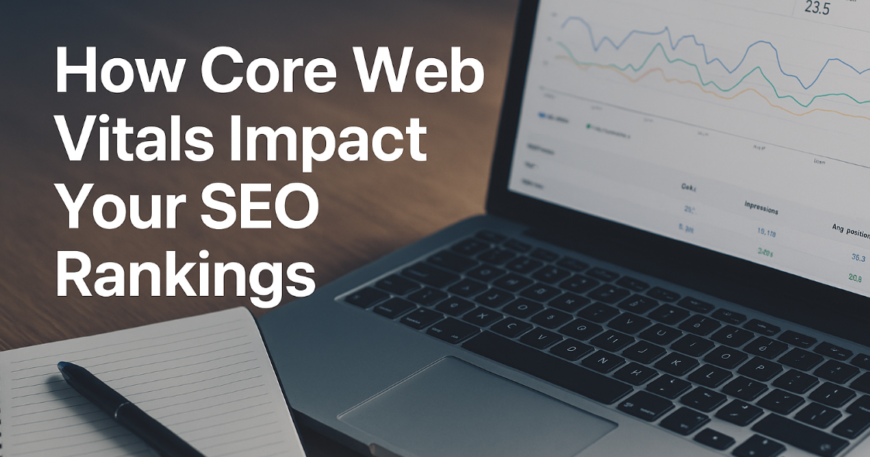
Table of Contents
- How Core Web Vitals Impact Your SEO Rankings
- Introduction to Core Web Vitals
- Understanding the Core Metrics
- Core Web Vitals vs Traditional SEO Signals
- Why Core Web Vitals Are Crucial for SEO
- Tools to Measure Core Web Vitals
- How to Improve Core Web Vitals
- Real-Life Case Studies
- Conclusion
- FAQs
Introduction to Core Web Vitals
What Are Core Web Vitals?
Core Web Vitals are a set of performance metrics introduced by Google to measure user experience on a website. These vitals reflect how quickly users can interact with your content, how stable your layout is, and how responsive your pages feel.
Why Google Introduced Core Web Vitals
Google is all about enhancing user experience. They don’t just want fast-loading pages—they want smooth, interactive, and frustration-free browsing. Core Web Vitals help them measure this experience and reward websites that deliver it well.
The Link Between User Experience and SEO
Better user experience leads to longer site visits, lower bounce rates, and more conversions—all things Google loves. That’s why Core Web Vitals are now part of the ranking algorithm.
Understanding the Core Metrics
Largest Contentful Paint (LCP)
What It Measures
LCP measures the time it takes for the main content (like a large image or heading) to load in the viewport.
Ideal Score for LCP
An LCP of 2.5 seconds or faster is considered good. Anything above 4 seconds is poor and could hurt your rankings.
First Input Delay (FID)
What It Measures
FID gauges how quickly a page responds when a user first interacts with it—like clicking a button or link.
Ideal Score for FID
Less than 100 milliseconds is excellent. More than 300ms? You’ve got some work to do.
Cumulative Layout Shift (CLS)
What It Measures
CLS checks how much your content moves around while loading. Ever clicked the wrong button because the page shifted? That’s CLS.
Ideal Score for CLS
Keep it under 0.1 for a stable and trustworthy user experience.
Core Web Vitals vs Traditional SEO Signals
How It Complements Page Speed
Page speed is crucial, but CWV goes deeper. It’s not just about speed—it’s about how that speed feels to users.
Mobile Friendliness and CWV
Since most traffic is mobile, CWV becomes even more critical. A site might be fast on desktop but clunky on mobile.
HTTPS and Safe Browsing Integration
Google combines CWV with other page experience signals like HTTPS, no intrusive interstitials, and mobile usability.
Why Core Web Vitals Are Crucial for SEO
Impact on Search Engine Rankings
Since 2021, CWV have been official ranking factors. While not the only factor, they’re a significant part of Google’s overall page experience score.
Influence on Bounce Rate and Dwell Time
Poor LCP or a high CLS can cause users to bounce before engaging. Better vitals = better engagement.
User Trust and Brand Perception
Ever been annoyed by a jittery website? Your users have too. A smooth site builds trust and credibility.

Tools to Measure Core Web Vitals
Google PageSpeed Insights
Plug in your URL and get a full CWV report with actionable tips.
Lighthouse Reports
Use Chrome DevTools to generate detailed performance audits including CWV.
Chrome User Experience Report
Real-world data from actual Chrome users. Great for benchmarking.
Search Console Core Web Vitals Report
See CWV performance across your entire site in Search Console.
How to Improve Core Web Vitals
Optimizing LCP
- Use fast hosting
- Compress images
- Eliminate render-blocking resources
- Prioritize above-the-fold content
Minimizing FID
- Reduce JavaScript execution time
- Use lazy loading
- Optimize third-party code
Reducing CLS
- Always define image and video dimensions
- Avoid ads or embeds that resize unexpectedly
- Use font-display: swap for web fonts
Real-World Optimization Tips
- Switch to a performance-focused CMS theme
- Consider a CDN
- Regularly audit with PageSpeed Insights and Lighthouse
Real-Life Case Studies
E-commerce Site Before and After CWV Fix
An online store reduced LCP from 6s to 2s and saw a 20% uplift in conversions and 15% drop in bounce rate.
SaaS Company’s Mobile UX Transformation
After focusing on CLS and FID, mobile sign-ups increased by 30%. User reviews started highlighting “smooth experience.”
Conclusion
Core Web Vitals are more than just numbers—they’re real-world indicators of how your website feels to your users. If you want better rankings, happier visitors, and higher conversions, optimizing for CWV is non-negotiable. Start with small changes, track your improvements, and turn your website into a performance powerhouse.
FAQs
Q1: What is a good LCP score?
A good LCP (Largest Contentful Paint) score is under 2.5 seconds.
Q2: Can Core Web Vitals alone improve rankings?
Not alone—but they significantly help when combined with good content and backlinks.
Q3: How often should I monitor my Core Web Vitals?
Monthly reviews are ideal, or more frequently if you’ve made major changes to your site.
Q4: Do Core Web Vitals affect mobile and desktop equally?
Google primarily considers mobile performance for rankings, so mobile CWV is more critical.
Q5: Are there plugins to help with CWV optimization?
Yes, tools like WP Rocket, NitroPack, and Smush (for WordPress) can improve loading times and layout stability.




